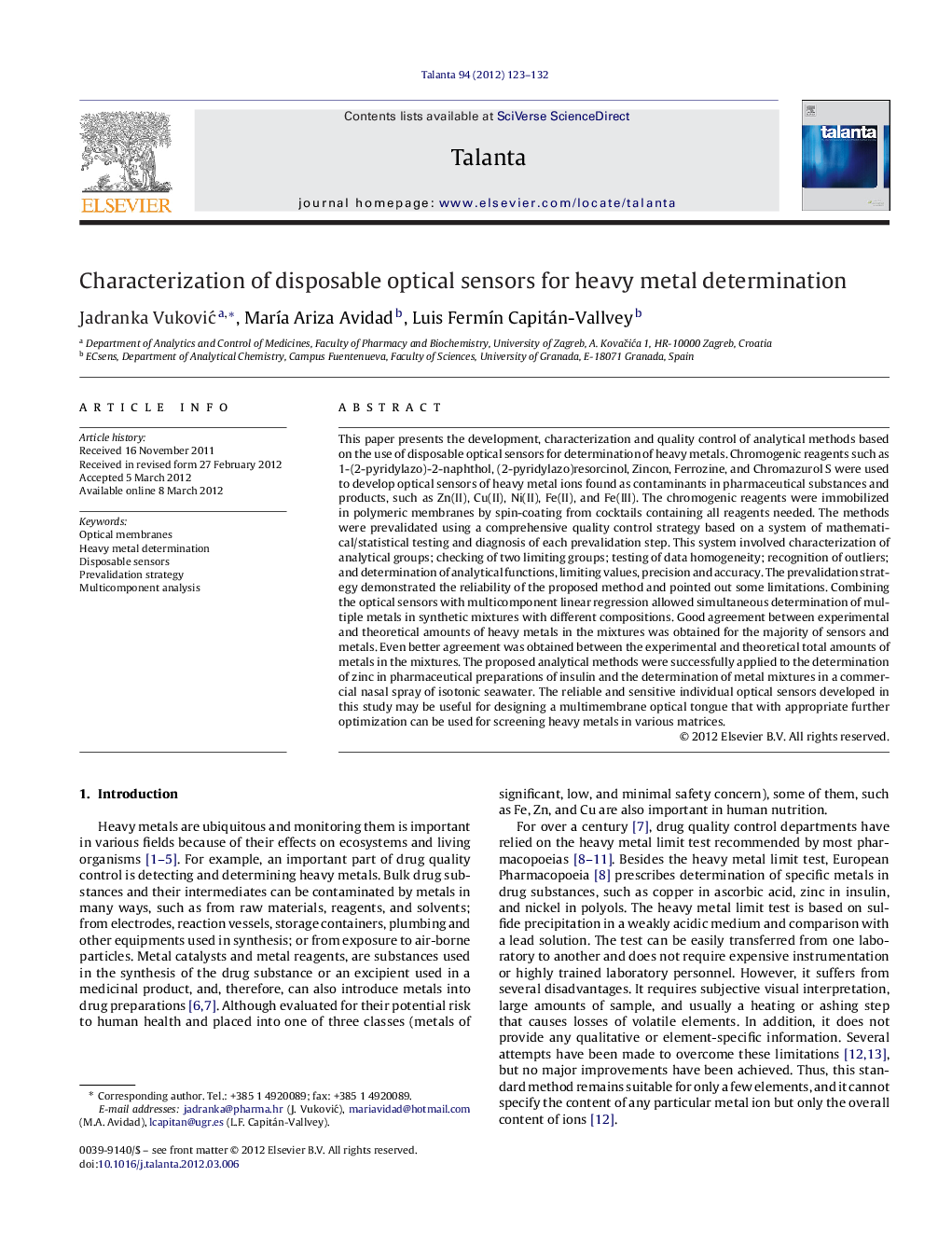| Article ID | Journal | Published Year | Pages | File Type |
|---|---|---|---|---|
| 1245624 | Talanta | 2012 | 10 Pages |
This paper presents the development, characterization and quality control of analytical methods based on the use of disposable optical sensors for determination of heavy metals. Chromogenic reagents such as 1-(2-pyridylazo)-2-naphthol, (2-pyridylazo)resorcinol, Zincon, Ferrozine, and Chromazurol S were used to develop optical sensors of heavy metal ions found as contaminants in pharmaceutical substances and products, such as Zn(II), Cu(II), Ni(II), Fe(II), and Fe(III). The chromogenic reagents were immobilized in polymeric membranes by spin-coating from cocktails containing all reagents needed. The methods were prevalidated using a comprehensive quality control strategy based on a system of mathematical/statistical testing and diagnosis of each prevalidation step. This system involved characterization of analytical groups; checking of two limiting groups; testing of data homogeneity; recognition of outliers; and determination of analytical functions, limiting values, precision and accuracy. The prevalidation strategy demonstrated the reliability of the proposed method and pointed out some limitations. Combining the optical sensors with multicomponent linear regression allowed simultaneous determination of multiple metals in synthetic mixtures with different compositions. Good agreement between experimental and theoretical amounts of heavy metals in the mixtures was obtained for the majority of sensors and metals. Even better agreement was obtained between the experimental and theoretical total amounts of metals in the mixtures. The proposed analytical methods were successfully applied to the determination of zinc in pharmaceutical preparations of insulin and the determination of metal mixtures in a commercial nasal spray of isotonic seawater. The reliable and sensitive individual optical sensors developed in this study may be useful for designing a multimembrane optical tongue that with appropriate further optimization can be used for screening heavy metals in various matrices.
► Disposable optical sensors for determination of zinc, copper, nickel, iron(II), and iron(III). ► Simultaneous determination of heavy metals by combining optical sensors with chemometric multicomponent analysis. ► An efficient and inexpensive alternative to the present pharmacopoeial heavy metal limit test. ► Possible integration of optical sensors into multimembrane tongues for simultaneous analysis of heavy metals.
